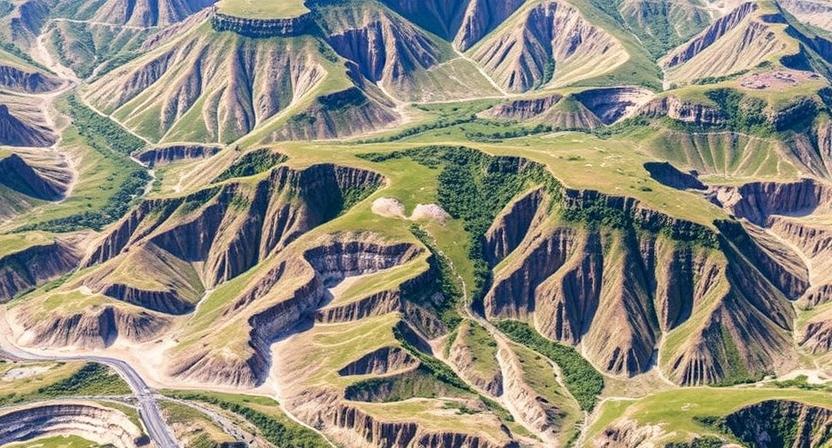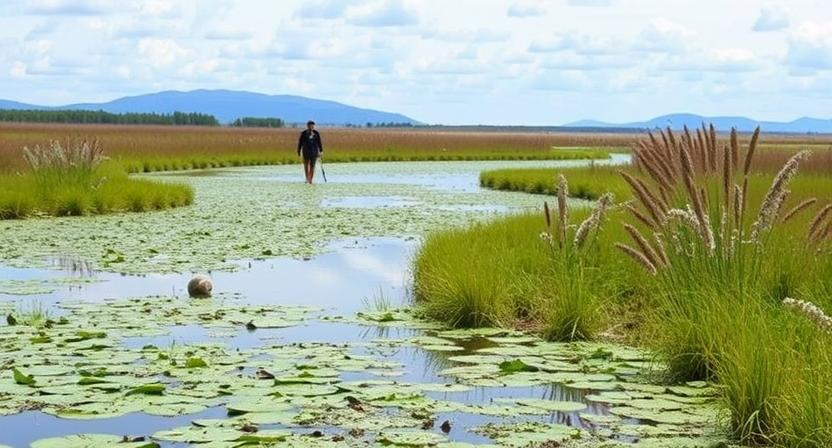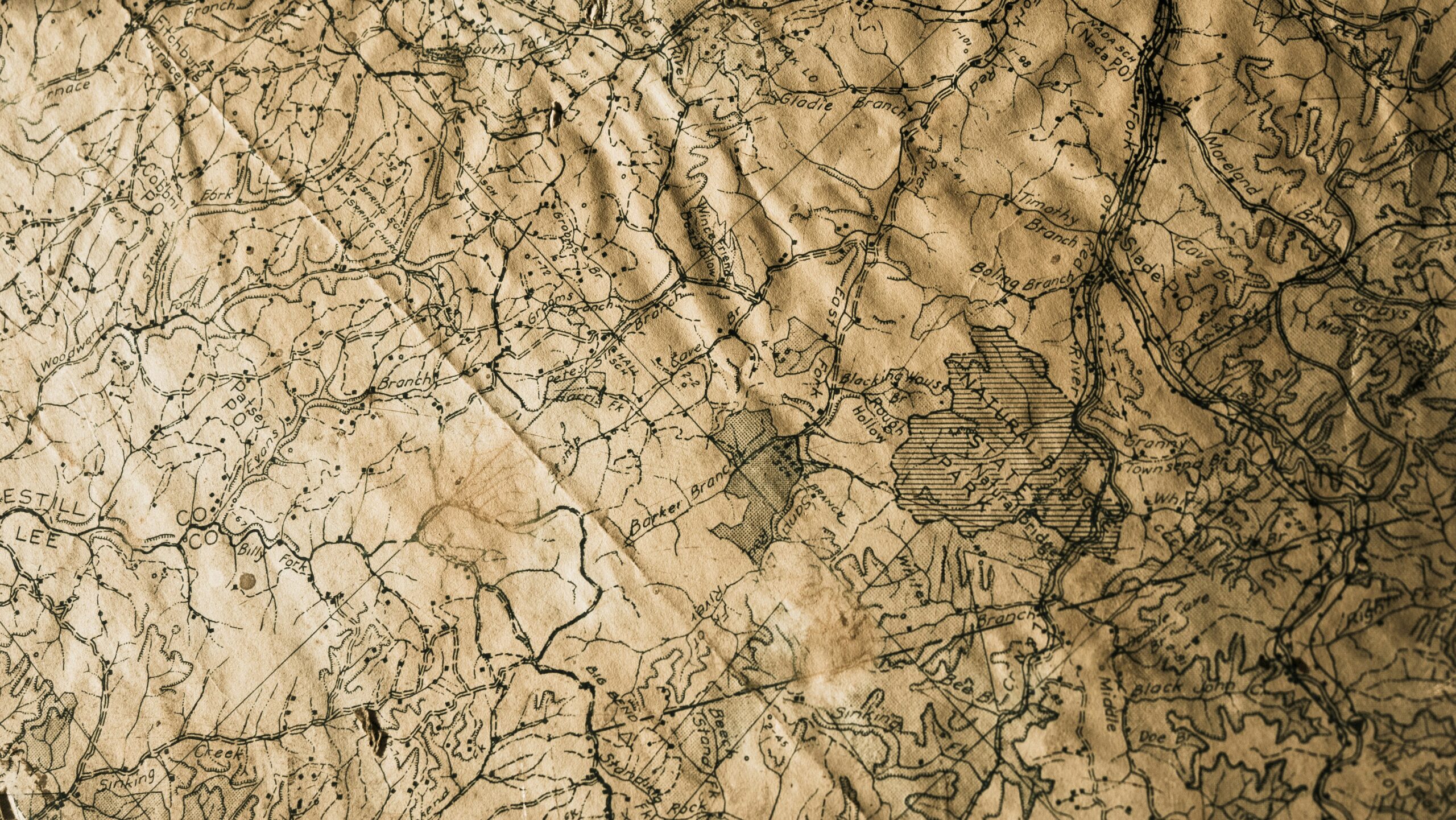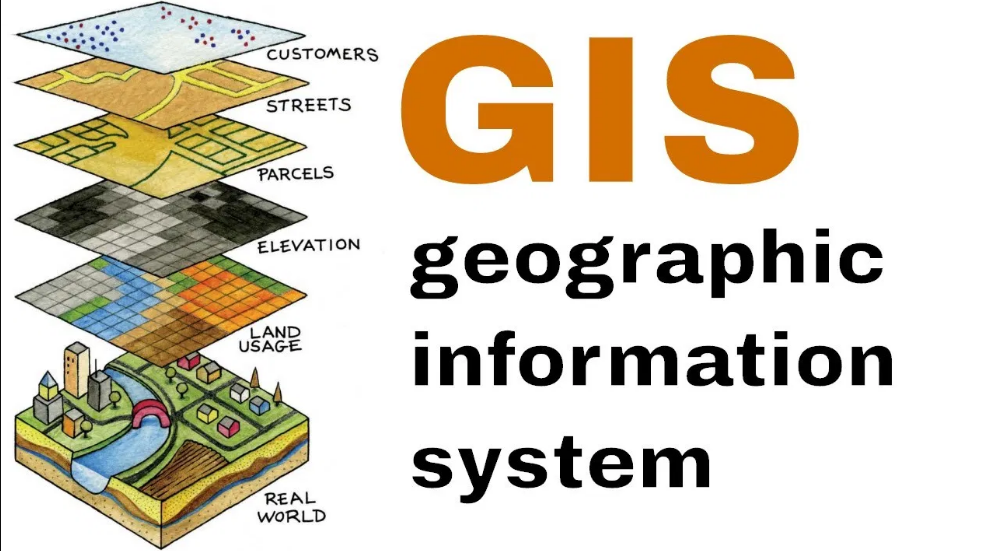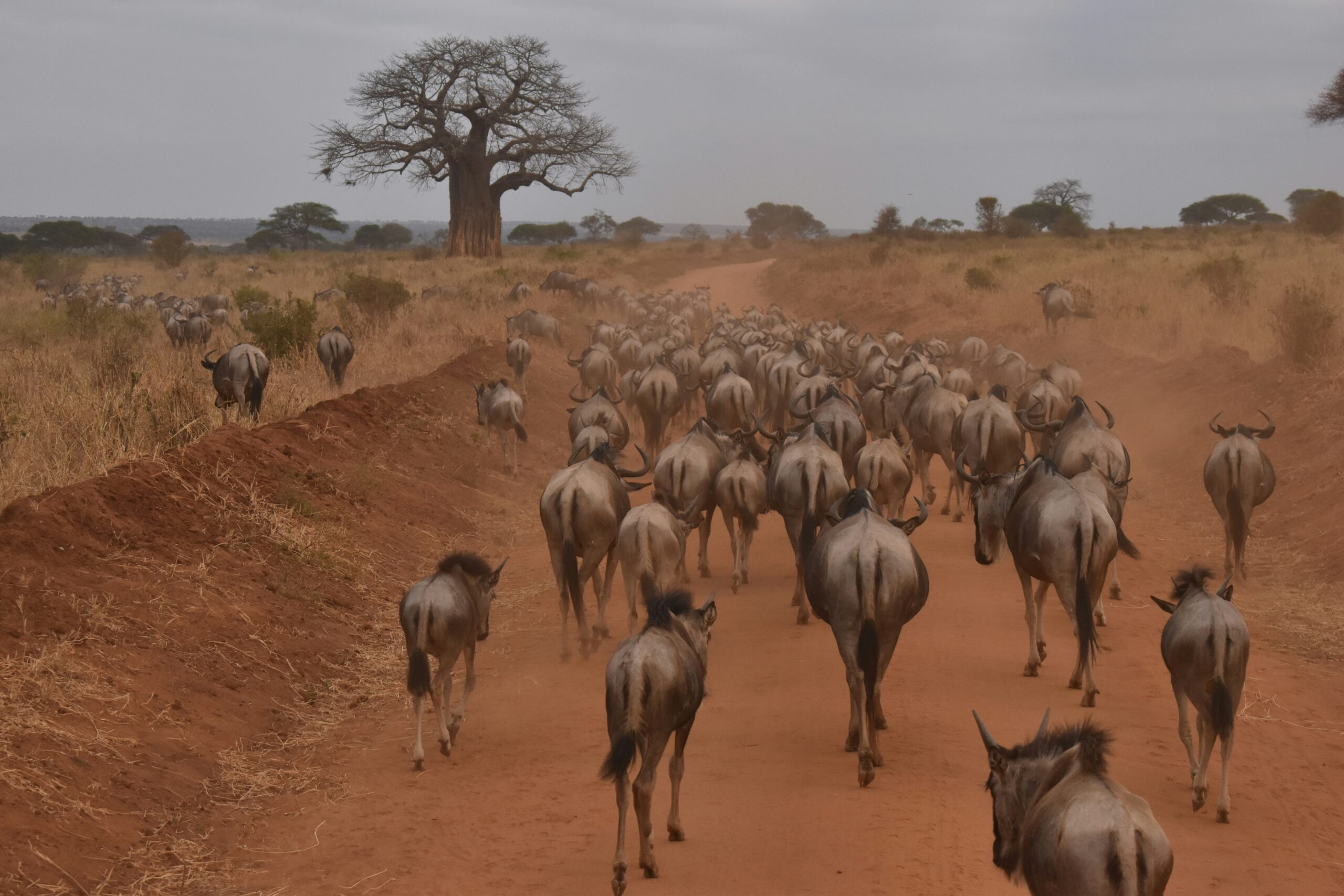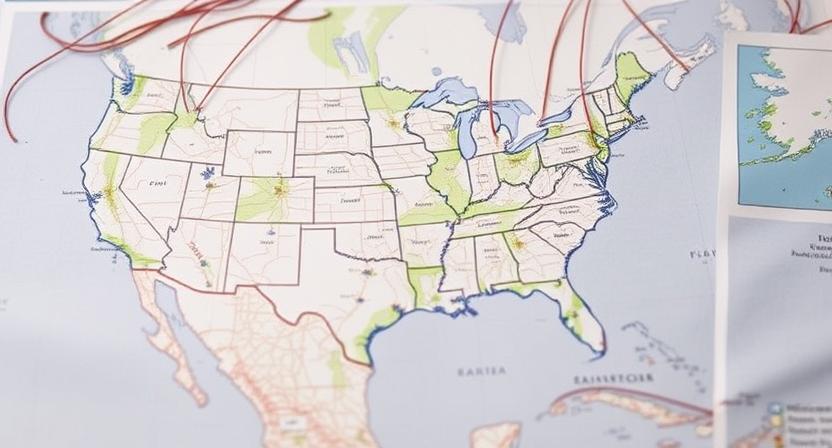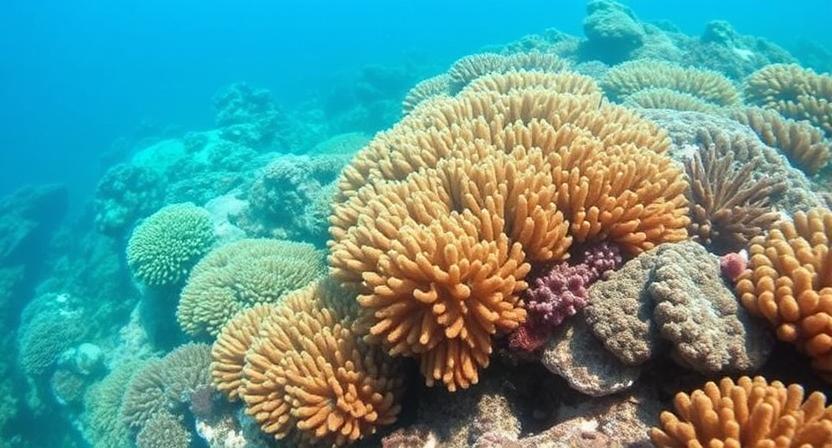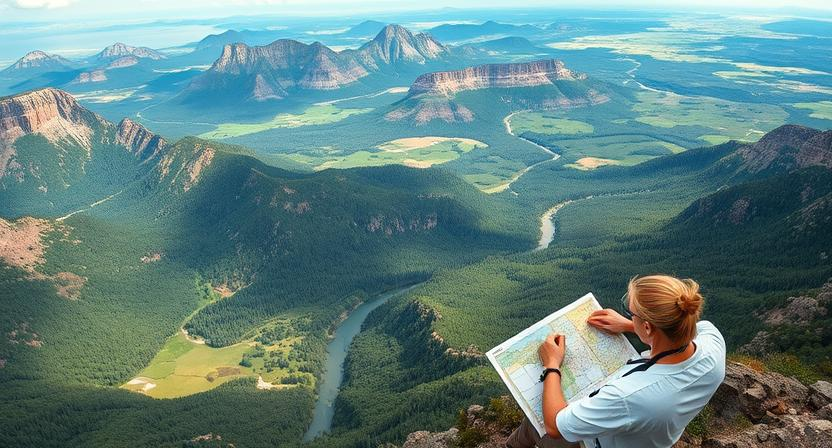
Why National Parks are Important for Geographers

National parks serve as invaluable outdoor classrooms for geographers, offering real-world examples of diverse landscapes, ecosystems, and human-environment interactions. By studying national parks, geographers can gain insights into the complexities of natural processes, environmental changes, and conservation strategies. These protected areas provide geographers with a rich tapestry of geographic phenomena to explore and analyze, fostering a deeper appreciation for the intricate connections between nature, culture, and society.
Moreover, national parks offer geographers unique opportunities to conduct field research, gather spatial data, and apply geographic techniques in a hands-on setting. By studying the spatial patterns of vegetation, wildlife distribution, landforms, and human activities within national parks, geographers can enhance their understanding of landscape dynamics and geographic processes. Through this experiential learning approach, geographers can contribute valuable insights to the sustainable management and preservation of these natural treasures for future generations.
• National parks provide real-world examples of diverse landscapes and ecosystems
• They offer insights into natural processes, environmental changes, and conservation strategies
• Studying national parks fosters a deeper appreciation for the connections between nature, culture, and society
• Geographers have unique opportunities to conduct field research in national parks
• They can gather spatial data and apply geographic techniques in a hands-on setting
• Studying spatial patterns within national parks enhances understanding of landscape dynamics
• Geographers can contribute valuable insights to sustainable management and preservation of national parks
The Impact of Climate Change on National Parks
Climate change poses a significant threat to the delicate ecosystems within national parks around the world. Rising temperatures, changing precipitation patterns, and more frequent extreme weather events are altering the landscapes and habitats within these protected areas. This disruption can lead to the loss of biodiversity, shifts in vegetation patterns, and challenges for wildlife populations that depend on stable environments to thrive.
As the impacts of climate change continue to unfold, national park managers are facing new challenges in conservation and preservation efforts. They are tasked with finding innovative ways to mitigate the effects of climate change on the natural and cultural resources within these protected areas. Strategies such as habitat restoration, carbon sequestration initiatives, and adaptive management practices are being implemented to help national parks adapt to the changing climate and ensure the long-term sustainability of these invaluable landscapes.
• National parks around the world are facing significant threats from climate change
• Rising temperatures, changing precipitation patterns, and extreme weather events are altering ecosystems
• Loss of biodiversity, shifts in vegetation patterns, and challenges for wildlife populations are some consequences
• National park managers are implementing strategies like habitat restoration and carbon sequestration to mitigate these effects
• Adaptive management practices are being used to help national parks adapt to a changing climate
The Role of Geomorphology in Shaping National Parks
Geomorphology plays a vital role in shaping the diverse landscapes found within national parks. The physical processes of erosion, deposition, and tectonic activity have sculpted the awe-inspiring features that attract visitors from around the world. From towering mountain ranges to deep river canyons, the geological history of these areas is a testament to the intricate relationship between earth processes and the formation of natural wonders.
Furthermore, the study of geomorphology allows researchers and park managers to better understand how these landscapes change over time. By examining the effects of weathering, faulting, and volcanic activity, they can anticipate potential hazards such as landslides or rockfalls. This knowledge is crucial for implementing conservation strategies and ensuring the long-term preservation of these irreplaceable environments.
• Geomorphology shapes diverse landscapes in national parks through erosion, deposition, and tectonic activity
• Geological history of national parks showcases intricate relationship between earth processes and natural wonders
• Study of geomorphology helps researchers and park managers anticipate potential hazards like landslides or rockfalls
• Understanding how landscapes change over time is crucial for implementing conservation strategies in national parks
Understanding Biodiversity in National Parks
National parks serve as vital havens for a plethora of plant and animal species, showcasing a rich tapestry of biodiversity. Within these protected areas, various ecosystems thrive, ranging from dense forests to expansive grasslands, providing a diverse habitat for numerous species to coexist. Through the careful management of these habitats, national parks play a crucial role in preserving the intricate web of life that contributes to the overall health of our planet.
Biodiversity in national parks not only offers a glimpse into the natural world’s complexity but also acts as a barometer for the overall environmental health of a region. By studying the biodiversity patterns within these parks, researchers can gain valuable insights into ecosystem dynamics and monitor changes over time. This information is essential for conservation efforts and the development of sustainable management practices to ensure that the delicate balance of species within national parks remains intact for future generations to appreciate.
• National parks are vital havens for a plethora of plant and animal species
• Various ecosystems thrive within these protected areas, from dense forests to expansive grasslands
• Careful management of habitats in national parks plays a crucial role in preserving biodiversity
• Biodiversity in national parks offers insights into ecosystem dynamics and environmental health
• Studying biodiversity patterns helps researchers monitor changes over time
• Conservation efforts rely on understanding the delicate balance of species within national parks
The Influence of Human Activity on National Parks

Humans play a significant role in shaping the landscapes and ecosystems of national parks around the world. From increased visitation rates to construction of infrastructure, human activities can have both positive and negative impacts on these protected areas. For example, the development of trails and visitor centers can enhance the overall experience for visitors, but it can also lead to habitat fragmentation and disturbance to wildlife populations.
Furthermore, activities like littering, pollution, and habitat destruction can degrade the environmental quality of national parks, threatening the biodiversity and ecological balance of these natural spaces. Climate change exacerbates these impacts by altering habitats and disrupting the delicate balance of ecosystems within national parks. As such, it is crucial for park management authorities to carefully monitor and regulate human activities within these areas to ensure the long-term conservation and sustainability of these invaluable natural resources.
• Increased visitation rates and construction of infrastructure can shape national parks
• Development of trails and visitor centers can enhance visitor experience but also lead to habitat fragmentation
• Littering, pollution, and habitat destruction degrade environmental quality of national parks
• Climate change exacerbates impacts by altering habitats and disrupting ecosystem balance
• Park management authorities must monitor and regulate human activities for conservation
Exploring the Cultural Geography of National Parks
National parks are not only natural landscapes but also cultural sites that hold significant historical and social value. The cultural geography of national parks encompasses the intricate relationship between humans and the environment, reflecting the ways in which various societies have interacted with and shaped these spaces over time. From indigenous communities with deep-rooted connections to the land to diverse visitor populations seeking recreation and education, national parks serve as dynamic hubs of cultural exchange and heritage preservation.
Through exploring the cultural geography of national parks, researchers gain insights into the complex layers of identities, traditions, and narratives woven into these protected areas. Understanding how cultural influences have impacted the development and management of national parks is crucial for enhancing conservation efforts and fostering sustainable practices. By recognizing the diverse values and meanings attached to these landscapes, we can work towards building inclusive and equitable strategies that respect the cultural significance of national parks for present and future generations.
• National parks are not only natural landscapes but also cultural sites
• Hold significant historical and social value
• Reflect the intricate relationship between humans and the environment
• Indigenous communities with deep-rooted connections to the land
• Diverse visitor populations seeking recreation and education
Through exploring the cultural geography of national parks, researchers gain insights into the complex layers of identities, traditions, and narratives woven into these protected areas. Understanding how cultural influences have impacted the development and management of national parks is crucial for enhancing conservation efforts and fostering sustainable practices. By recognizing the diverse values and meanings attached to these landscapes, we can work towards building inclusive and equitable strategies that respect the cultural significance of national parks for present and future generations.
Analyzing Land Use Patterns in National Parks
Land use patterns in national parks play a vital role in shaping ecosystems and preserving natural beauty. These patterns encompass a variety of activities including recreation, conservation, and infrastructure development. By examining how different areas within a national park are utilized, geographers can gain valuable insights into human-environment interactions and make informed decisions regarding sustainable management practices.
Mapping out land use patterns helps in identifying areas of high visitor traffic, sensitive habitats, and potential conflicts between conservation goals and recreational activities. Understanding these patterns allows park managers to implement strategies that minimize environmental impact while still providing opportunities for visitors to enjoy and appreciate the natural landscapes. Through detailed analysis of land use, geographers can contribute to the long-term protection and conservation of national parks for future generations to experience and cherish.
• Land use patterns in national parks are crucial for shaping ecosystems and preserving natural beauty
• Activities within national parks include recreation, conservation, and infrastructure development
• Mapping out land use patterns helps identify high visitor traffic areas, sensitive habitats, and potential conflicts between conservation goals and recreational activities
• Understanding these patterns allows park managers to implement strategies that minimize environmental impact while still providing opportunities for visitors to enjoy the natural landscapes
• Detailed analysis of land use by geographers contributes to the long-term protection and conservation of national parks
The Significance of Water Resources in National Parks
Water resources play a vital role in maintaining the ecological balance and supporting diverse ecosystems within national parks. Rivers, streams, lakes, and wetlands are crucial components of these protected areas, providing habitats for a wide range of plant and animal species. Additionally, water bodies in national parks are not just essential for wildlife but also serve as sources of drinking water for both animals and visitors alike. The availability of clean and fresh water is fundamental for the survival and overall health of all organisms within these natural environments.
Furthermore, the significance of water in national parks goes beyond ecological importance. Many national parks are also popular recreational destinations for activities such as swimming, boating, and fishing, all of which rely on the presence of water resources. Moreover, aesthetic value is added to these protected areas by the presence of picturesque water bodies, enhancing the overall visitor experience and appreciation of the natural beauty found within national parks. Thus, the preservation and sustainable management of water resources are crucial for ensuring the long-term viability and conservation of these treasured landscapes.
• Water resources play a vital role in maintaining ecological balance and supporting diverse ecosystems within national parks.
• Rivers, streams, lakes, and wetlands provide habitats for a wide range of plant and animal species.
• Water bodies in national parks serve as sources of drinking water for animals and visitors alike.
• Clean and fresh water is fundamental for the survival and overall health of all organisms within these environments.
• Many national parks are popular recreational destinations for activities such as swimming, boating, and fishing.
• These activities rely on the presence of water resources within the parks.
• Aesthetic value is added to national parks by picturesque water bodies, enhancing visitor experience and appreciation of natural beauty.
• Preservation and sustainable management of water resources are crucial for long-term viability and conservation of these landscapes.
Mapping Vegetation in National Parks

National parks serve as vital reservoirs of biodiversity, housing a diverse range of flora and fauna. Understanding the distribution and composition of vegetation within these protected areas is crucial for effective conservation and management strategies. Through the use of advanced mapping techniques such as remote sensing and Geographic Information Systems (GIS), researchers can accurately map out the different vegetation types present in national parks. This detailed vegetation mapping helps in monitoring changes over time, identifying areas of ecological significance, and guiding habitat restoration efforts.
Accurate vegetation mapping also aids in assessing the health of ecosystems within national parks and evaluating the impact of human activities on plant communities. By analyzing vegetation cover, density, and species composition, researchers can gain insights into the overall ecological health of these protected areas. Furthermore, mapping vegetation provides valuable data for conservationists to establish baseline information for long-term monitoring and to make informed decisions regarding land management practices within national parks.
• Remote sensing and GIS are advanced mapping techniques used to map vegetation in national parks
• Detailed vegetation mapping helps in monitoring changes over time and identifying areas of ecological significance
• Accurate vegetation mapping aids in assessing the health of ecosystems within national parks
• Mapping vegetation provides valuable data for conservationists to establish baseline information for long-term monitoring
Geospatial Technologies Used in National Park Management
Geospatial technologies play a crucial role in the management of national parks. Geographic Information Systems (GIS) are extensively used to analyze and visualize spatial data related to the parks’ natural resources, infrastructure, and visitor activities. By integrating various layers of information, park managers can make informed decisions regarding conservation efforts, land use planning, and emergency response strategies.
Remote sensing techniques, such as satellite imagery and aerial drones, provide valuable insights into the dynamic changes occurring within national parks. These technologies help monitor vegetation health, erosion patterns, wildlife habitats, and illegal activities like poaching. The data collected through remote sensing aids in assessing the overall health of the park ecosystem and guides conservation efforts to ensure the long-term sustainability of these protected areas.
• Geographic Information Systems (GIS) are used to analyze and visualize spatial data in national parks
• Park managers can make informed decisions regarding conservation efforts and land use planning
• Remote sensing techniques, such as satellite imagery and aerial drones, provide valuable insights into dynamic changes within parks
• Monitoring vegetation health, erosion patterns, wildlife habitats, and illegal activities like poaching is made easier with remote sensing technologies
• Data collected through remote sensing aids in assessing the overall health of park ecosystems
Examining Wildlife Migration Routes in National Parks
Wildlife migration routes are vital for the survival and well-being of numerous species within national parks. These routes serve as corridors for animals to move between different habitats, search for food, mate, and evade predators. Understanding and protecting these migration routes is crucial for maintaining healthy ecosystems and preserving biodiversity within national park boundaries.
Geographers and conservationists use a variety of methods to examine wildlife migration routes in national parks, including GPS tracking, camera traps, and field observations. By studying the movements of animals and identifying key migration corridors, researchers can make informed decisions on habitat protection, wildlife conservation, and land management strategies. By focusing on preserving these critical pathways, national park authorities can ensure the long-term sustainability of wildlife populations and safeguard the ecological balance within these protected areas.
• Wildlife migration routes are essential for the survival of many species in national parks
• Corridors allow animals to move between habitats, search for food, mate, and avoid predators
• Protecting these routes is crucial for maintaining healthy ecosystems and biodiversity within parks
Geographers and conservationists utilize various methods to study wildlife migration routes in national parks:
• GPS tracking helps monitor animal movements
• Camera traps capture images of wildlife using specific corridors
• Field observations provide valuable data on migratory patterns
Studying these migration routes allows researchers to make informed decisions on:
• Habitat protection measures
• Wildlife conservation strategies
• Land management practices
Preserving critical pathways within national parks ensures:
• Long-term sustainability of wildlife populations
• Ecological balance within protected areas
Geological Processes at Work in National Parks
National parks serve as living laboratories showcasing a myriad of geological processes at work. From the formation of majestic mountains to the carving of deep canyons by flowing rivers, these protected areas offer a glimpse into the dynamic forces shaping our planet over millions of years. The presence of volcanic landscapes, glacial valleys, and ancient rock formations in national parks highlights the intricate geological history embedded in their terrain.
With each passing season and every shift in weather patterns, the geological processes in national parks continue to sculpt and redefine the landscape. Erosion by wind and water, the gradual movement of tectonic plates, and the deposition of sediments all contribute to the ongoing transformation of these natural environments. By studying these geological processes within national parks, researchers gain valuable insights into Earth’s complex history and the interconnectedness between geological forces and the biodiversity thriving within these protected areas.
• The formation of majestic mountains showcases tectonic plate movement
• Deep canyons carved by flowing rivers demonstrate the power of erosion
• Volcanic landscapes highlight the impact of volcanic activity on landforms
• Glacial valleys exhibit the effects of glaciation on shaping terrain
• Ancient rock formations provide a glimpse into the geological history embedded in national parks
As visitors explore national parks, they witness firsthand the effects of these ongoing geological processes. From towering cliffs eroded by wind and water to sediment deposits creating new land formations, each park offers a unique perspective on Earth’s ever-changing landscape. By observing and studying these processes, individuals can gain a deeper appreciation for the natural forces at work in shaping our planet.
In addition to their scientific value, national parks also serve as educational tools for understanding geology and environmental conservation. By learning about the geological processes that have shaped these landscapes over time, visitors can develop a greater awareness of their role in preserving these natural wonders for future generations. Through interpretation programs and guided tours, park rangers help connect visitors with the rich geological history present within each park.
The Relationship Between National Parks and Indigenous Communities

Indigenous communities have long-standing connections to the land that national parks now protect. These communities often possess traditional ecological knowledge that is invaluable for understanding and conserving the natural and cultural resources within these protected areas. By recognizing and incorporating indigenous perspectives, national park management can benefit from a more holistic approach that considers the intricate relationships between people, land, and biodiversity.
However, the relationship between national parks and indigenous communities is not always harmonious. Historically, the establishment of national parks has sometimes resulted in the displacement of indigenous peoples from their ancestral lands, leading to cultural disruption and loss of traditional practices. It is essential for park authorities to engage in meaningful dialogue and collaboration with indigenous communities to ensure that their rights, knowledge, and interests are respected and integrated into the decision-making processes regarding the management and conservation of national parks.
• Indigenous communities possess traditional ecological knowledge that is crucial for understanding and conserving natural resources
• National park management can benefit from incorporating indigenous perspectives for a more holistic approach
• Historically, the establishment of national parks has led to displacement of indigenous peoples from their ancestral lands
• Meaningful dialogue and collaboration between park authorities and indigenous communities are essential for respecting rights, knowledge, and interests
Measuring Visitor Impact on National Park Environments
Visitor impact on national park environments is a crucial aspect that needs close monitoring and assessment. The sheer number of visitors, coupled with their activities, can have both positive and negative effects on the delicate ecosystems within these protected areas. From trampling vegetation to wildlife disturbances, understanding the extent of visitor impact is essential for effective conservation management.
Park managers often employ various techniques to measure visitor impact, ranging from visitor surveys to on-site observations. By gathering data on visitor behavior and the resulting environmental changes, park authorities can make informed decisions to mitigate negative impacts and enhance the overall visitor experience. Balancing conservation with recreation is a constant challenge, but with proper monitoring and analysis, national parks can continue to thrive as valuable natural and cultural heritage sites for generations to come.
• Visitor impact on national park environments is a crucial aspect that needs close monitoring and assessment.
• The sheer number of visitors, coupled with their activities, can have both positive and negative effects on the delicate ecosystems within these protected areas.
• Understanding the extent of visitor impact is essential for effective conservation management.
Park managers often employ various techniques to measure visitor impact:
• Visitor surveys
• On-site observations
By gathering data on visitor behavior and environmental changes, park authorities can:
• Make informed decisions to mitigate negative impacts
• Enhance the overall visitor experience
Balancing conservation with recreation is a constant challenge, but with proper monitoring and analysis, national parks can continue to thrive as valuable natural and cultural heritage sites for generations to come.
The Evolution of National Park Boundaries
Over time, the boundaries of national parks have undergone significant transformations due to various factors. Initially, national park boundaries were often demarcated based on the presence of unique geological features, biodiversity hotspots, or areas of cultural significance. As the understanding of conservation science has advanced, park boundaries have been expanded to encompass larger ecosystems, migration corridors for wildlife, and buffer zones to protect the core areas from external threats. This evolution reflects a shift towards a more holistic approach to park management that accounts for interconnected natural systems and the need for landscape-level conservation strategies.
Moreover, political and economic considerations have also played a role in shaping national park boundaries. In some cases, boundary adjustments have been made to accommodate the interests of local communities, address conflicting land use demands, or account for historical claims to territory. Balancing conservation objectives with socio-economic factors is a complex challenge that park managers must navigate when determining the boundaries of protected areas. By tracing the evolution of national park boundaries, we can gain insights into the dynamic interplay between ecological, social, and political forces that shape the management of these iconic landscapes.
• Initially, national park boundaries were based on unique geological features, biodiversity hotspots, or cultural significance
• Boundaries have expanded to include larger ecosystems and migration corridors for wildlife
• Buffer zones are now established to protect core areas from external threats
• Political and economic factors influence boundary adjustments
• Local community interests and conflicting land use demands are considered in boundary decisions
• Historical claims to territory may also impact national park boundaries
• Park managers must balance conservation objectives with socio-economic concerns
Remote Sensing Applications in National Park Conservation
Remote sensing plays a pivotal role in the conservation efforts of national parks worldwide. By utilizing cutting-edge technology such as satellites and drones, park managers can efficiently monitor vast areas of land to track changes in vegetation, detect illegal logging activities, and assess the impact of natural disasters. These remote sensing applications provide valuable data that inform conservation strategies and help protect the biodiversity within national parks.
Furthermore, remote sensing allows for the regular monitoring of water resources within national parks. By analyzing images captured from space, researchers can track changes in water bodies, monitor water quality, and assess the impact of climate change on freshwater ecosystems. This data is instrumental in developing sustainable water management practices to ensure the long-term health of aquatic habitats within national parks.
• Remote sensing technology, such as satellites and drones, aids in monitoring vegetation changes
• Helps in detecting illegal logging activities within national parks
• Assists in assessing the impact of natural disasters on park ecosystems
• Provides valuable data to inform conservation strategies for protecting biodiversity
• Regular monitoring of water resources in national parks is made possible through remote sensing
• Analysis of images captured from space helps track changes in water bodies
• Monitoring water quality and assessing climate change impacts on freshwater ecosystems are key benefits
• Data obtained aids in developing sustainable water management practices for aquatic habitats
Comparing National Parks Across Different Countries

National parks serve as vital natural sanctuaries across the globe, offering protection to diverse ecosystems and wildlife. When comparing national parks across different countries, it becomes apparent that each park has its unique features and challenges influenced by the country’s geographical location, climate, and human impact. For instance, the vast savannas of Serengeti National Park in Tanzania showcase spectacular wildlife migrations, while the geothermal wonders of Yellowstone National Park in the United States highlight unique geological features.
Moreover, the management strategies employed in national parks vary greatly from country to country, reflecting contrasting cultural and economic contexts. While some countries prioritize ecotourism and sustainable practices to preserve their parks, others may face challenges due to insufficient funding or competing land use demands. Understanding these differences is crucial in order to exchange best practices and ensure the long-term conservation of national parks worldwide.
• Serengeti National Park in Tanzania showcases spectacular wildlife migrations
• Yellowstone National Park in the United States highlights unique geological features
• Management strategies vary greatly from country to country
• Some countries prioritize ecotourism and sustainable practices for park preservation
• Others may face challenges due to insufficient funding or competing land use demands.
The Economics of National Park Tourism
National parks play a crucial role in the economy, attracting millions of visitors each year and contributing significantly to local communities through tourism revenue. The economic impact of national park tourism extends beyond the park boundaries, benefiting nearby businesses such as hotels, restaurants, and outdoor recreation companies. Furthermore, the presence of national parks can enhance property values and stimulate economic development in surrounding areas.
In addition to direct spending by visitors, national park tourism also generates job opportunities in various sectors such as hospitality, transportation, and retail. The ripple effect of tourism dollars circulating in the local economy can support small businesses and help diversify revenue streams for rural communities. As a result, national parks not only conserve natural and cultural heritage but also serve as economic engines that drive sustainable growth and prosperity in regions that rely on tourism.
• National parks attract millions of visitors each year
• Tourism revenue contributes significantly to local communities
• Benefits nearby businesses such as hotels, restaurants, and outdoor recreation companies
• Enhances property values and stimulates economic development in surrounding areas
In addition to direct spending by visitors, national park tourism also generates job opportunities in various sectors such as hospitality, transportation, and retail. The ripple effect of tourism dollars circulating in the local economy can support small businesses and help diversify revenue streams for rural communities. As a result, national parks not only conserve natural and cultural heritage but also serve as economic engines that drive sustainable growth and prosperity in regions that rely on tourism.
Urbanization Threats to National Parks
Urbanization poses a significant threat to the integrity of national parks worldwide. As urban areas expand and encroach upon natural landscapes, the delicate balance of these protected areas is disrupted. The increasing human population in urban centers leads to heightened pressure on nearby national parks, fueling habitat loss, pollution, and habitat fragmentation.
The rapid urban development often results in land conversion for residential, commercial, and infrastructure purposes, encroaching on the boundaries of national parks. This encroachment can lead to habitat degradation, disruption of wildlife corridors, and increased human-wildlife conflicts. Additionally, urbanization brings about increased noise and light pollution, altering natural processes within national parks and affecting the behavior of wildlife populations.
• Land conversion for residential, commercial, and infrastructure purposes
• Habitat degradation and disruption of wildlife corridors
• Increased human-wildlife conflicts
• Noise and light pollution affecting natural processes within national parks
Innovations in Sustainable Practices for National Park Management
Sustainable practices have become increasingly crucial in the management of national parks worldwide. These innovative approaches aim to strike a balance between conservation efforts and the needs of visitors while minimizing the environmental impact of park operations. By implementing sustainable practices, national park managers can ensure the long-term protection of the park’s natural and cultural resources for future generations.
One key innovation in sustainable park management is the integration of renewable energy sources to reduce the parks’ reliance on fossil fuels. This includes the installation of solar panels, wind turbines, and hydroelectric systems to power park facilities and minimize greenhouse gas emissions. Adopting energy-efficient technologies and practices not only helps in protecting the environment but also sets an example for visitors on the importance of sustainability in preserving the beauty and integrity of national parks.
• Implementing renewable energy sources such as solar panels, wind turbines, and hydroelectric systems
• Reducing reliance on fossil fuels to power park facilities
• Minimizing greenhouse gas emissions through sustainable energy practices
• Setting an example for visitors on the importance of environmental conservation in national parks

